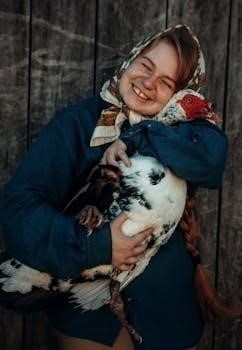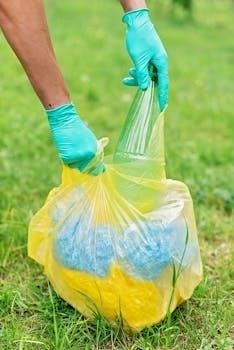
Blue tongue skinks, fascinating reptiles, require specific care. Their needs vary by species, making research vital. Understanding humidity, temperature, and lighting is crucial for their well-being. This guide provides essential information for proper care.

Understanding Blue Tongue Skink Species
Blue tongue skinks, a diverse group of lizards, have varying care requirements depending on their specific species. The Northern blue tongue skink, a popular choice, needs different environmental conditions compared to the Classic Indonesian or the Halmahera blue tongue skink. Humidity levels, for instance, are a key differentiator. Northern blue tongues thrive in drier environments, typically with humidity levels ranging from 40% to 60%. On the other hand, Classic Indonesian blue tongues require higher humidity levels, ideally between 60% and 80%. The Halmahera species, originating from a more tropical region, need the highest humidity levels of all, often between 80% and 100%. Understanding these differences is essential for providing appropriate care. Additionally, Merauke and Irian Jaya blue tongues also have their own specific humidity requirements, typically falling within the 60-80% range. Proper identification of your skink’s species will help you ensure you provide the correct habitat for your pet. Careful attention to these distinctions will contribute greatly to your skink’s health and longevity.

Enclosure Setup
Creating the right habitat is essential for blue tongue skinks. This involves choosing an appropriate tank, selecting the proper substrate, and maintaining specific temperature and humidity levels to mimic their natural environment.
Tank Size and Substrate
Providing an adequately sized enclosure is paramount for the well-being of your blue tongue skink. The size will vary depending on the specific species, however, a good rule of thumb is to provide a minimum of a 40-gallon breeder tank for juveniles and a 75-gallon tank for adults. Larger tanks are always preferable, allowing for a more natural habitat, and room to roam and explore. Blue tongue skinks are terrestrial animals and are not good climbers, so floor space is more important than vertical height. The substrate, or bedding, you choose will impact the humidity levels and the ease of cleaning. For Northern blue tongue skinks, a substrate that retains some humidity but is not overly wet, such as cypress mulch or coconut coir, is ideal. For Indonesian species, a substrate that holds more moisture, such as a mixture of soil, moss, and coconut fiber, is recommended. Avoid using substrates like pine or cedar shavings, as they can be toxic to reptiles. Always ensure the substrate is deep enough to allow for burrowing, which these reptiles enjoy. Regular spot cleaning and full substrate changes will be necessary to maintain a healthy environment for your skink.
Temperature Requirements
Maintaining the correct temperature gradient within your blue tongue skink’s enclosure is crucial for their thermoregulation and overall health. These reptiles require a basking spot with a higher temperature, typically around 105 degrees Fahrenheit, to aid in digestion and metabolism. This can be achieved using a basking lamp. The ambient temperature on the warm end of the enclosure should ideally be in the mid-80s Fahrenheit. Conversely, the cool end of the enclosure should be in the mid-70s Fahrenheit. It is essential to allow your skink to move freely between these temperature zones. Nighttime temperatures should drop slightly, to around 70 to 72 degrees Fahrenheit. If your home gets much colder than this, you may need to use a ceramic heat emitter to maintain proper temperatures. Always use a reliable thermometer to monitor temperatures, both at the basking spot and at the cool end. Do not rely on the dial thermometers which are often inaccurate. It is very important to ensure that the temperature is correct for the species of blue tongue skink you have as some have slightly different temperature requirements.
Humidity Levels
Maintaining proper humidity levels is essential for the health and well-being of your blue tongue skink, though the specific requirements vary significantly between species. For Northern blue tongue skinks, a humidity range of 40-60% is generally recommended, whereas Classic Indonesian blue tongue skinks need 60-80%, Halmahera blue tongue skinks thrive in a higher range of 80-100%, and Merauke blue tongue skinks do well with 60-80%. It is important to keep in mind that humidity levels can fluctuate, even in nature. Ideally, average humidity should be within the recommended range, and while it may drop a bit during the day, it may also rise at night. The most important thing is to avoid chronic low humidity, which may lead to health problems. Monitor your enclosure’s humidity using a digital hygrometer, this will give you the most accurate reading. You can adjust humidity levels by adding a water dish to your enclosure, increasing or decreasing the amount of substrate, misting, or using a fogger. It is vital to research the specific requirements of your species, and always aim for a stable and appropriate humidity level.

Lighting
Proper lighting is crucial for blue tongue skinks. This involves providing both UVB and basking lights. These lights help with vitamin D3 synthesis and thermoregulation, which are vital for their overall health.
UVB and Basking Lights
Providing the correct lighting for your blue tongue skink is essential for their health and well-being. UVB lighting is vital as it enables the skink to synthesize vitamin D3, which is crucial for calcium absorption and bone health. Without adequate UVB exposure, your skink may develop metabolic bone disease, a serious condition. The UVB light should be a specialized reptile bulb, positioned correctly to provide the right intensity. It needs to be replaced regularly, as the UVB output decreases over time, even if the bulb still emits visible light.
Basking lights are equally important because they provide the necessary heat for the skink’s thermoregulation. Blue tongue skinks need a temperature gradient within their enclosure, with a warm basking spot and a cooler area to retreat to. The basking spot should reach the appropriate temperature, often around 105 degrees Fahrenheit, while the cooler end should be in the mid-70s to 80s Fahrenheit. Use a reliable thermometer to accurately monitor these temperatures. Ceramic heat emitters can be used to provide heat at night, ensuring the temperature doesn’t drop too low. These heat sources do not emit light, allowing for a natural day-night cycle. Remember, the correct combination of UVB and basking lights will help ensure a healthy and thriving blue tongue skink.

Feeding
A balanced diet is crucial for blue tongue skinks. They require a mix of insects, vegetables, and fruits. Variety is key to ensure they get all needed nutrients. Proper feeding habits lead to a healthy skink.
Dietary Needs
Blue tongue skinks are omnivores, requiring a diverse diet to thrive. A balanced mix of insects, vegetables, and fruits is essential for their health. Insects such as crickets, dubia roaches, and mealworms should make up a portion of their protein intake. These insects should be gut-loaded with nutritious foods before being offered to the skink. Vegetables should comprise the majority of their diet, offering essential vitamins and minerals. Suitable options include collard greens, mustard greens, and squash. Fruits can be offered in moderation as a treat, such as berries and melon. It’s crucial to avoid feeding them citrus fruits due to their high acidity. Variety is key to preventing nutritional deficiencies. Dusting insects with calcium and vitamin D3 supplements is important, especially for young and growing skinks. Always provide fresh, clean water in a shallow dish, and avoid overfeeding to prevent obesity, which is common in captive reptiles. The exact amount of food will depend on the size and age of your blue tongue skink, so it’s important to monitor their body condition and adjust their diet accordingly. Understanding these needs is crucial for the well-being of your skink.